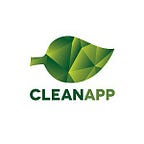CleanApp’s Incentive Tree Design
Imagine a nationwide scavenger hunt for ten red balloons, hidden in plain sight, with the internet as your primary tool. This was the premise of the 2009 DARPA Network Challenge, a competition designed to explore the power of social networking and the internet in solving broad, time-critical problems.
DARPA offered $40,000 to the winning team, guessing it would take between few days to a few weeks for a winner to emerge.
The winning team, from MIT, devised a brilliant strategy that was as ingenious as it was effective. They created an incentive tree, promising $2,000 to the first person to report the correct coordinates of a balloon. But here’s the twist: they also offered $1,000 to the person who invited that finder, $500 to the person who invited the inviter, and so on. This clever approach turned potential competitors into cooperating partners, creating a cascading network of balloon hunters. The result? All ten balloons were found in under nine hours, showcasing the incredible power of online social networking and crowdsourcing.
CleanApp’s incentive tree is modeled directly on the MIT team’s strategy in the Red Balloon Challenge. But instead of looking for just ten red balloons, we’re inviting you to map all the world’s illegal dumpsites and hazards.
Here’s how it works:
Referral Structure:
A player (R1) generates a custom referral code. Any number of players can sign up with this code, becoming R1’s direct referrals (R2s). These R2s can then create their own referral codes and refer other players (R3s), who can further refer more players (R4s), and so on.
Reward Structure:
The rewards are structured in a tiered manner with a decay factor. R1 earns 10% of their R2s’ rewards, 5% of their R3s’ rewards, 2.5% of their R4s’ rewards, 1.25% of their R5s’ rewards, and so on. This structure is mirrored for each player, meaning an R2 would earn 10% of their direct referrals (R3s), 5% of their R4s, and so on.
Here’s what the incentive tree looks like:
Who’s incentivized to do what?
Our goal is to incentivize the largest number of active players, globally. As a player, you’re motivated to maximize the number of people who use your referral code to sign up for the game. You get more points from active players. If your referrals sign up but don’t play actively, you the referrer don’t many get referral points. OTOH, if you recruit active players, who recruit even more active players, you get a large and growing referral multiplier.
So early adopters win more?
Not quite. Say you just learned about CleanApp. As you’re signing up, you have a choice: (A) you can sign up with someone’s referral code & become, say, an R3g in their referral tree; or, (B) you can sign up without a referral code. Either way, you can always generate your own referral code. In option (A), the person who referred you gets more referral points. In option (B), you are in friendly competition with other players to get as many referral points as you can, before the referral bonus pool runs out.
All players are motivated to refer active players. The scheme rewards active participation, not just recruitment. This encourages quality over quantity in terms of referrals.
Summary:
The CleanApp Referral Bonus Scheme is designed to incentivize players to refer more players. Key points:
- Incentive: The scheme incentivizes players to generate custom referral codes and refer other active players into the game. The more players, the more fun, the cleaner the world.
- Legality: CleanApp is a social coordination game. As we play, we research how to best motivate people to report waste & hazards. The scheme is legal as in-game rewards are not financial assets, they are not securities, or any of that other mumbo-jumbo in any conventional sense. CleanApp tokens are better thought of as in-game rewards equivalent to Reddit Karma, other video game XPs, or, even more accurately, as sui generis research tokens. Can CleanApp points become valuable over time? Yes, of course, but that depends predominantly on YOUR efforts.
- Fairness: The scheme is fair as any late player entering the game can avail themselves to the same rules that even the earliest adopters are playing by.
Comparing CleanApp to MIT’s winning “incentive trees” approach, here are some similarities and differences:
Similarities:
- Both schemes incentivize the recruitment of new participants.
- Both schemes offer rewards that decrease with each subsequent level of referral.
Differences:
- The DARPA challenge was a one-time event with a single prize, while the CleanApp referral scheme is ongoing with continuous rewards.
- The DARPA challenge had a more straightforward reward system, while the CleanApp scheme has a more complex, multi-tiered system with a decay factor.
Bottom line:
Use referral code “TrashIsCash” & start playing today. 🌍😻🌏💚🌎
* kudos to Dan Finley for reminding everyone about the 🎈challenge
